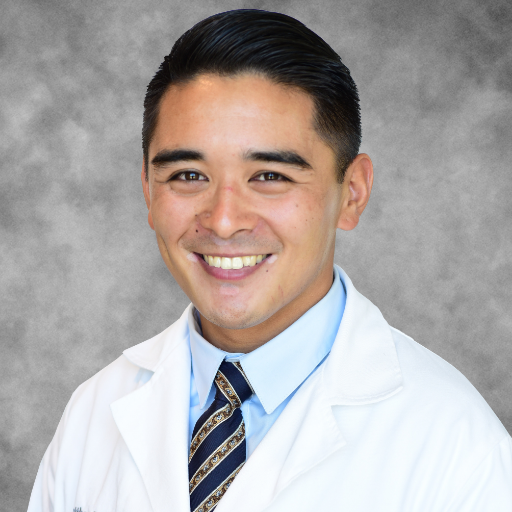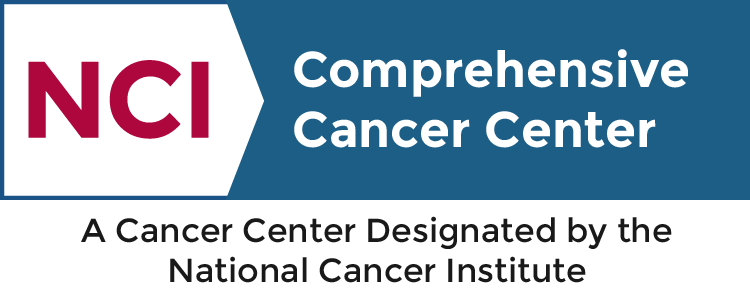Dermatologist and postdoctoral fellow Matthew Dizon, MD, lent his expertise to our Wipe Out Melanoma – California initiative. Dizon discusses his thoughts on melanoma risk during cold and cloudy weather and how ultraviolet (UV) radiation affects us.
During autumn and winter seasons, are we less at risk for melanoma due to cold and/or cloudy climate, and do we tend to pay less attention to our skin during these colder and overcast seasons?
We may be exposed to less UV radiation for a given amount of time when the skies are overcast. However, the total amount of UV exposure can still be high if we spend enough time outdoors. Because of this, I still recommend shade, hats, long sleeves, pants, and sunscreen products. People generally pay less attention to sun protection during colder and overcast seasons as they may not observe sunburns or tanning, which indicates significant sun exposure.
I think it’s best if we think of sun protection as part of our daily routine, just like brushing and flossing our teeth or wearing our seat belts in automobiles. Good dental hygiene can prevent cavity formation. Wearing a seat belt lowers the risk of more serious injury in case of an accident. We usually don’t decide to brush our teeth based on our diet on a given day. Similarly, we don’t base our decision to wear a seat belt on our driving patterns or traffic conditions. If we forget to brush our teeth or put on our seat belts, we notice our forgetfulness and often make corrections. I think we should look at sun protection this way.
Should we base our melanoma prevention behaviors upon the UV index?
Regardless of the weather or UV index, we should be thinking about covering up. We should have those automatic thoughts, "I'm going to be outside for a while, I should make sure I bring the right clothing and sunscreen. I may need to bring a tent or umbrella if there won't be any shade."
My skin tans easily and rarely burns. I didn’t grow up using sunscreen regularly, but I definitely think about sun protection now. If my family wants to go to the beach, I make sure that we cover up and bring a small tent so that we can minimize our time in direct sunlight. I'm known to bring an umbrella when friends want to go out on a river or lake.
Making sun protective behavior a daily routine is the best way to reduce our risk for melanoma and nonmelanoma skin cancers.
When we are exposed to any kind of sunlight, regardless of the weather, are there certain types of UV radiation we should be most concerned about? How do these groups of UV rays affect the skin?
Imagine the sound of a symphony orchestra. At any given time, we are hearing a combination of different instruments, like violins, cellos, flutes, and horns. Sunlight is similar in that the light consists of different components. Ultraviolet light is one of the elements that can be further broken down into UVC, UVB, and UVA.
UVC is blocked by the Earth's atmosphere, so UVB and UVA are the relevant forms for us on the Earth’s surface. Both UVB and UVA can damage the DNA that programs our cells as well as the proteins and lipids that make up the cells, though UVB is responsible for more mutation and damage than UVA. UVB is also the main player in causing redness and sunburn. Both UVA and UVB contribute to skin darkening.
It is important to realize that skin cancer is the result of multiple dynamic processes. Ultraviolet light can damage DNA and cells, but our bodies have the ability to repair damaged DNA and eliminate mutated cells. Our cells often have layered safeguards so that function can be maintained even when mutations are present. Only when damage accumulates enough to outpace our ability to repair will a skin cancer form.
One interesting and underappreciated process is the ability of UV light to lower our immune response in the skin. As dermatologists, we often use medical narrowband UVB, a common phototherapy, to treat chronic inflammatory skin conditions such as eczema and psoriasis. For skin cancer, this is a problem because our immune system helps identify and remove mutated cells before they can transform into cancer. UV light both increases the damage and reduces the repair.
For those of us with medium to dark skin tones, should we still consider ourselves at risk, regularly check our skin, and be aware of changes?
Skin types are associated with skin cancer risk in sun-exposed areas. Natural color is important, but we also pay attention to how easily the skin burns or tans when assigning a skin type. Patients with white skin that never tans and always burns are at the highest risk. Patients with dark brown skin that rarely burns to black skin that never burns are at lower risk. Some forms of skin cancer, however, do not have a clear connection to sun exposure. For example, acral melanomas (located on the palms of the hands and soles of the feet) don’t follow this pattern. The incidence of these melanomas is similar in both white and black patients. Squamous cell carcinomas in the anogenital region may also be linked to the human papilloma virus.
Melanoma and nonmelanoma skin cancers can occur in any skin type. We must all consider ourselves at risk. However, recommendations for behaviors based on varied risk deserves discussion. I routinely recommend scheduled skin checks for patients with a personal history of skin cancer, a family history of melanoma, or a medical condition or use of medication that suppresses the immune system. When we ask patients to check their own skin, there’s a chance that they’ll notice a skin lesion and trigger a sequence of events such as a telehealth visit, an office visit, a biopsy, and follow-up encounters. Along the way, they may face healthcare costs, be bothered by worry or uncertainty, or experience pain or scarring from procedures. Early detection of skin cancer can minimize the complexity and morbidity of treatment and save lives, particularly for melanoma. When we find and treat these skin cancers, the sequence of events is worthwhile.
Some of the skin lesions that patients find, or lesions noted incidentally during an exam, may never have a negative impact on the patient’s survival or quality of life. In these cases, the patient may experience the costs without benefits. The practice of medicine is not perfect, and I think it is our responsibility to try our best to help patients understand these issues so that they can make the best informed decision for themselves. The balance of benefit and cost for full body self-exams in a 65-year-old man with white skin that burns easily and a family history of melanoma is going to be different than the balance for a 30-year-old man with dark brown skin that rarely burns. Similar thinking about individual risk has been applied to other cancers. For example, providers may discuss whether an average risk woman should perform self-exams to detect breast cancer or if a man without specific risk factors should participate in prostate cancer screening.
What would you like the readers to take away from this interview?
I hope that readers take home the idea that UV radiation from the sun causes damage to our cells, and though we have some ability to repair this damage, we are at risk of forming skin cancers over time. Fortunately, we have an opportunity to minimize this risk by practicing sun protective behaviors and reducing our overall UV exposure.
I realize that we have many competing demands on our time and energy; it can be challenging to add additional tasks to our day. Seeking shade, wearing the right clothing, and applying sunscreen are demands on our time and energy. We may not be able to see or feel any immediate benefits from these behaviors, so they are easy to overlook. Just like brushing our teeth, these behaviors are investments in our future health, and we are more likely to practice them when they are part of our daily routine.
-----------
ELLEN DINUCCI is a contributing writer of WOM-California Gazette and staff member of the Office of Cancer Health Equity and Community Engagement at Stanford Cancer Institute.



